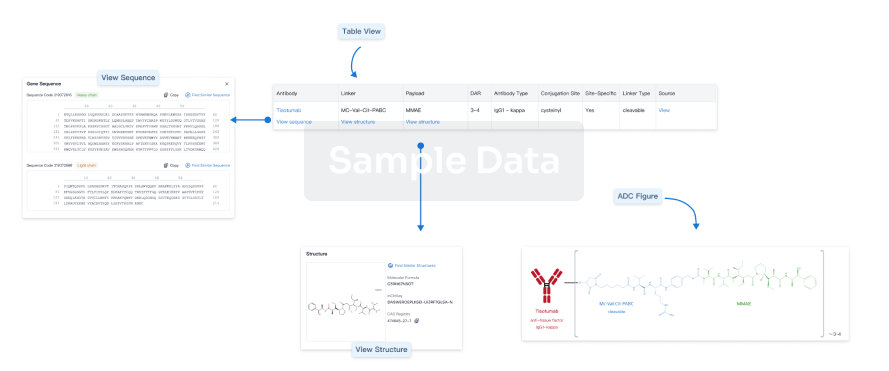SGM-101 is an investigational new imaging agent for fluorescence-guided surgery designed to enable surgeons to better visualize tumor tissues in real-time
SGM-101 is
an investigational new imaging agent for fluorescence-guided surgery designed to enable surgeons to better visualize tumor tissues in real-time
Montpellier, France, 17
th
October 2019
:
SurgiMab
, a late-stage biotechnology company pioneering a new antibody-based fluorescence-guided approach with the aim to improve cancer surgery and clinical outcomes for patients, today announces that the first US patient has been recruited into its on-going pivotal Phase 3 clinical trial evaluating its investigational imaging agent SGM-101 in patients undergoing colorectal cancer (CRC) surgery.
The randomized Phase 3 trial, designed following discussions with the
FDA
and other regulators, aims to enroll 300 CRC patients in ten clinical centers in Europe and the US. The trial will assess the safety and clinical benefit of using fluorescence-guided surgery (FGS) with SGM-101 as an intraoperative imaging agent to better identify cancer lesions during the surgical procedure. Patients are injected with 10mg of SGM-101 four days prior to the scheduled CRC surgical procedure. Preliminary clinical data from the Phase 3 trial is expected in 2020. (
ClinicalTrials.gov Identifier: NCT03659448
)
SGM-101
is a tumor-specific antibody conjugated to a dye (fluorophore) that fluoresces under near-infra-red light
; it selectively targets a marker on the cancer cell surface known as carcinoembryonic antigen (CEA), which is overexpressed by more than 95% of colorectal cancer cells. SGM-101 is being developed to provide cancer surgeons with
a novel intraoperative imaging tool designed to improve the visualization of tumor tissues overexpressing CEA in real-time during surgery
. The aim of the study is to demonstrate that SGM-101 could be used to enable surgeons to more clearly
delineate the margin between tumor tissue and healthy tissue
. If this is the case, it could allow a more accurate and complete resection of tumor tissue beyond what can currently be achieved with standard procedures. The Phase 3 trial is also seeking to determine if the use of SGM-101 could minimize or prevent removal of healthy tissue adjacent to tumor cells in order to better preserve functional outcomes.
SurgiMab is advancing SGM-101 into a pivotal Phase 3 trial based on compelling results from a Phase 2 study (n=75) in which residual and otherwise invisible tumor tissue was detected using SGM-101 during FGS. The Phase 2 study, published in
The Lancet Gastroenterology & Hepatology
[1]
, has shown that the use of SGM-101 during surgery leads to a modification of surgery in 35% of patients with recurrent or peritoneal metastases of CRC by allowing either more aggressive resection of tumor tissue or by preserving healthy tissue.
Dr Françoise Cailler, SurgiMab’s CEO
, commented, “
We are delighted to have started recruiting US patients into our pivotal Phase 3 study testing SGM-101 as a novel intraoperative imaging tool in CRC surgery. If this Phase 3 trial successfully demonstrates that the use of SGM-101 improves tumor resection, we believe that this could provide a new approach for the close to 150,000 patients diagnosed with CRC every year in the United States, most of whom undergo surgery. We look forward to reporting the preliminary data from our Phase 3 study in 2020.”
Participating centers in the US in the Phase 3 study include:
Cleveland Clinic Florida, Weston, FL
Massachusetts General Hospital , Boston, MA
Moores Cancer Center – UC San Diego Health, La Jolla, CA
Abramson Cancer Center of the University of Pennsylvania, Philadelphia, PA
-ENDS-
Note to editors
Photos available on request
Contacts
:
SurgiMab
Dr Françoise Cailler, CEO
E:
fcailler@surgimab.com
Citigate Dewe Rogerson
Sylvie Berrebi, Mark Swallow, David Dible
T: +44 (0) 20 7638 9571
E:
SurgiMab@citigatedewerogerson.
com
About SurgiMab
SurgiMab is a clinical-stage biotechnology company pioneering a new antibody-based fluorescence-guided approach designed to improve cancer surgery and clinical outcomes for patients.
The Company’s lead investigational imaging agent SGM-101 comprises a tumor-specific antibody that targets carcinoembryonic antigen (CEA), conjugated to a dye (fluorophore) that fluoresces under near-infra-red (700nm) light. SGM-101 is in a pivotal Phase 3 trial in colorectal cancer (CRC) patients. SurgiMab is planning to develop SGM-101 and, pending approval, intends to launch and commercialize this specialty product together with partners in selected markets.
SurgiMab was founded in 2011 and is a privately-owned company headquartered in Montpellier (France).
For more information, please visit
[1]
The Lancet Gastroenterology & Hepatology, Vol. 3, No. 3, p181–191
Published: January 17, 2018
Safety and effectiveness of SGM-101, a fluorescent antibody targeting carcinoembryonic antigen, for intraoperative detection of colorectal cancer: a dose-escalation pilot study










